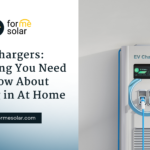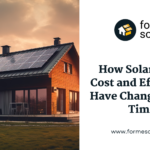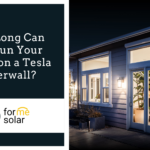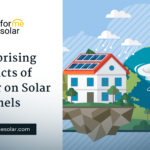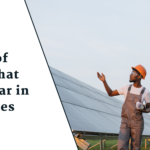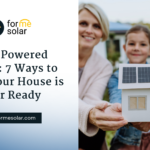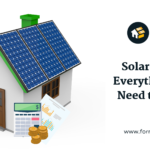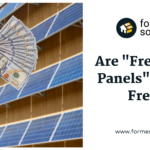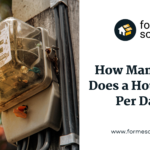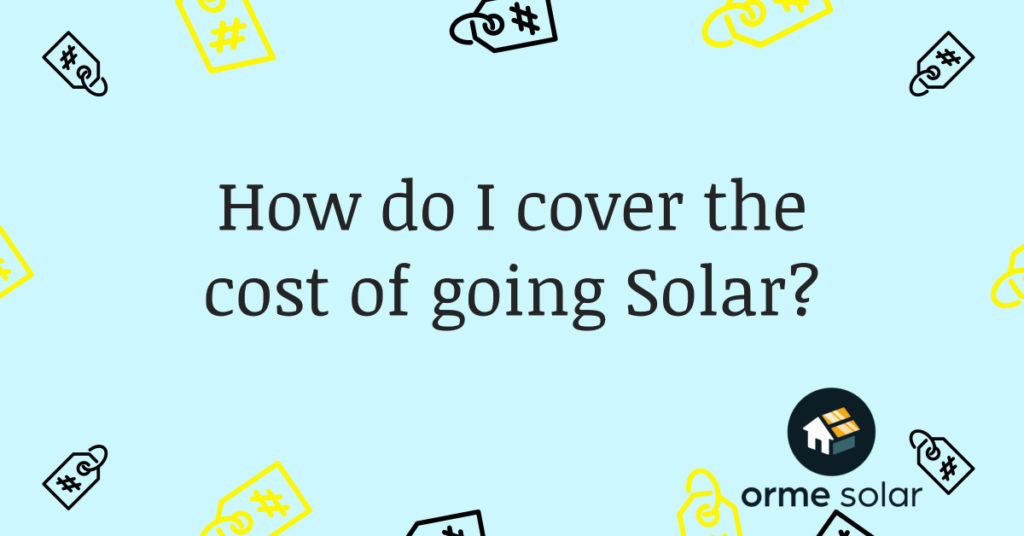
Table of Contents
How do I cover the cost of going Solar?
How do I Cover the Cost of Going Solar + Battery?
Millions of solar panels have been installed over American rooftops, and more and more people and businesses are choosing to power up their daily lives by utilizing the sun's energy. As the cost of solar panels continues to drop, solar installations continue to grow with no signs of slowing down.
According to the Solar Energy Industries Association (SEIA), over 1.9 million US homes now feature solar installations. That number is expected to cross the 2 million mark this year, and it's expected to hit 4 million by 2023.
Solar now annually replaces more than 73 million metric tons of CO2 emissions. That is the equivalent taking 15.6 million vehicles off the road or planting nearly 1.2 billion trees. Now, imagine those numbers doubling when we hit 4 million home installations in 2023.
Understanding the price you pay for solar
The price you are quoted for in your solar energy system covers everything needed to install the solar panels on your home. Such as the panels and other hardware, labor, the permits and paperwork, and even the installer's business expenses.
In terms of the hardware, it depends on how big the system you'd like to be installed and the quality of equipment you'll use. Moreover, you also need to pay for the labor on designing and installing your solar panel system.
As you begin to explore solar PV system quotes for your home or business, you might notice significant differences in pricing. There are several reasons for the wide discrepancy in pricing. First, there's the cost of the equipment- not all solar panels are created equal, more efficient equipment and certain brands will come with a higher price tag.
While equipment cost tends to take up the most significant part of the solar energy system quote, obtaining the proper permits and labor also carries considerable costs. Typically, you'll also have to pay a fee to be allowed to connect your solar energy system to the grid. The characteristics of your home may also play a part in the total cost, in that certain rooftops or situations could make it a bit more challenging to add solar. The ideal layout would be if your rooftop faces south, has little to no shade, and slopes at a 30-degree angle.
If this may sound a little bit pricey, don't worry! There are incentives and discounts available for installing solar, including a 30% tax credit from the Federal government. Your installers can also help you to access any additional local discounts and incentives.
Solar Panels Cost
The easiest way to calculate the cost is to look at the price per watt, which is consistent across the U.S. right now, many homeowners are paying between $2.90 and $3.90 per watt.
Knowing the average cost per watt is helpful, but what does $3.16 per watt mean to you? Well, the average solar energy system size in the United States is 5 kilowatts, and of course, all this depends on how much electricity you want to generate.
But based on the average price of $3.16 per watt, a 5-kilowatt system will cost $15,800, or $11,060 after the 30% Federal tax credit.
After your federal solar tax credits have been applied, a 6-kilowatt system will cost $13,500. An 8-kilowatt system will cost $17,500, and a 10-kilowatt system will cost $22,500 dollars. And again, these prices reflect the cost after you receive your federal tax credit.
You'll find free quotes from local installers once you register your property or you can request a quote directly from a reputable solar installer. Also, the biggest installer isn't always the best. Large installers will be between $25,000 more expensive than a smaller solar company. If you have offers from some big installers, compare those with a couple of quotes from local installers to make sure you're not overpaying by getting multiple solar bids you can compare cost and savings based on the equipment packages.
Solar Panel Installation Cost Breakdown
Here’s a cost breakdown of a home solar installation, based on findings from the National Renewable Energy Laboratory:
- Labor: $0.30 per watt
- Solar Panels: $0.47/Wdc
- Inverter price: $0.12/Wdc - $0.39/Wdc
- Permit/Inspection: $0.06/Wdc
- Structural BOS: $0.10/Wdc
- Electrical BOS: $0.19–$0.27/Wdc (Differ by inverter option)
- Sales tax varies by location; weighted national average: 6.9%
- Electrician: $19.74–$38.96 per hour (Differ by location and inverter option)
- Laborer: $12.88–$25.57 per hour (Differ
- by location and inverter option)
- Burden rates (% of direct labor) Total nationwide average: 31.8%
Source: https://www.nrel.gov/docs/fy19osti/72399.pdf
*These prices are based on the average 6.2-kilowatt solar system. The value of each system will differ depending on the panel manufacturer, inverter option, location, and equipment.
Will I save money by going solar for my home?
The amount of money you can save with solar depends on how much power you use, the size of your solar PV energy system, and how much power it can generate. It also depends on the electricity rates set by your utility and how much the utility will offset from the energy you send back to the grid.
How will solar increases the value of my home?
Buying a solar energy system will increase your home's value. According to a recent study, solar panels are viewed as upgrades, and it increases home value by 4% on average. So for a $500,000 home, adding solar could add an additional $20,000 on your home value. Additionally, homes equipped with solar power systems sell faster than non-solar properties. All things being equal, would you prefer living in a home where with no electricity bill thanks to solar, or one where you have to pay an electric bill?
From another viewpoint, solar installations are also a cost-saving measure. You and the future owner of your house can decrease your energy costs by taking advantage of the sun’s freely-available, no-cost renewable energy.
Forme Solar Provides Quality Solar Service at a Low Cost
You must consider multiple options before making a final decision, and quotes from Forme Solar is the best way to guarantee that you're paying a fair price for the right quality system. We guarantee that our solar systems will meet your energy needs, meet your budget, diminish your carbon footprint, and contain your long-term energy expenses.
Our goal is to empower homeowners in their shift to renewable energy sources and reduce their electricity costs. Make sure that going solar will match your needs by checking out our solar panel installation guide (read here) or give us a call at 714) 694-2262!


